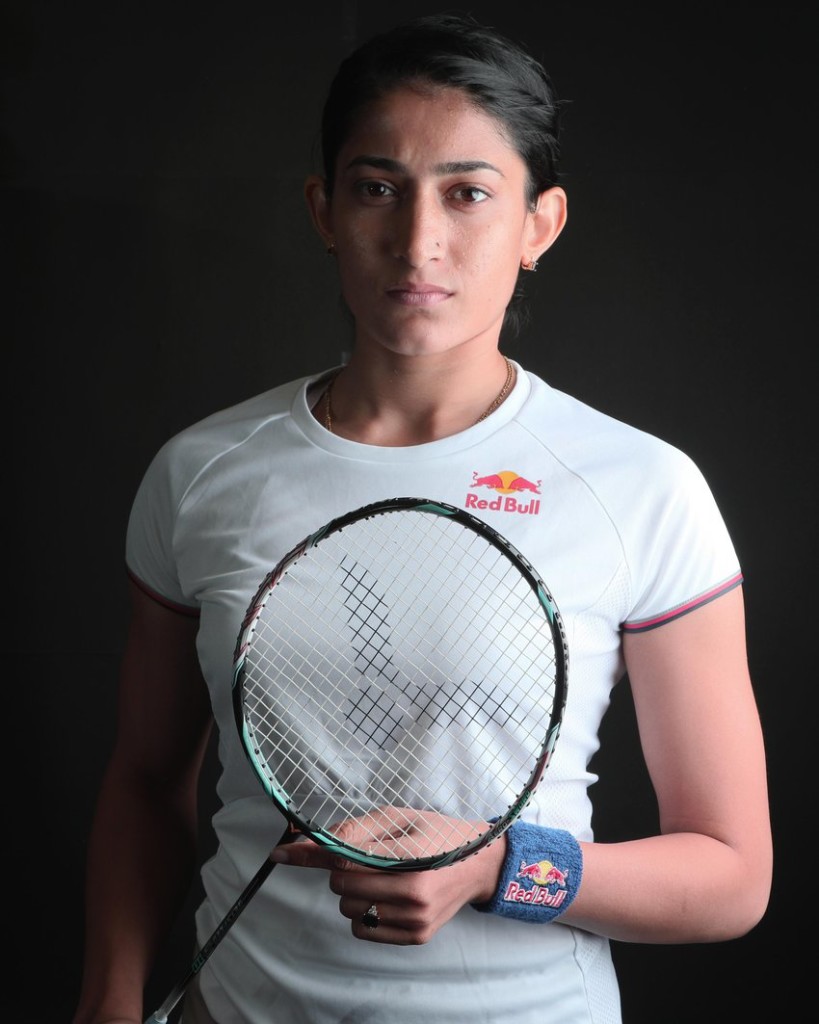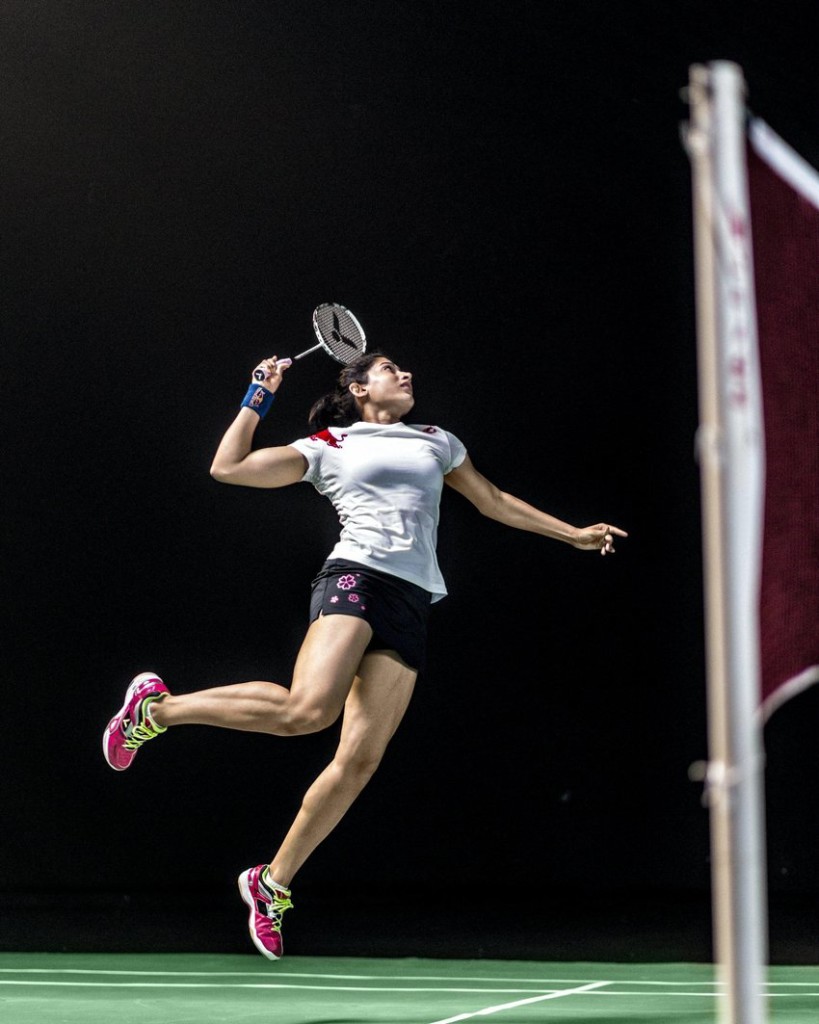Top doubles player Ashwini Ponnappa, her partner N Sikki Reddy, and coach Tan Kim Her give us some pro tips to become a better doubles badminton player.
If badminton is rock music, doubles badminton is heavy metal.
Faster, sharper, more chaotic, more emphatic beats per second; the doubles game feels like someone has turned up the volume and energy levels on a badminton court. It’s busy and breathless calling for action and reaction every second.
Unlike doubles in racquet sports like tennis and squash, doubles badminton is a specialist art. Players are meant to be groomed from a young age for doubles badminton. It is rare to see a badminton player compete in both singles and doubles.
“Even among the doubles events, mixed doubles players don’t play women’s doubles or men’s doubles,” says India’s leading women’s doubles player Ashwini Ponnappa. “There is a huge difference in training, rotation and understanding among the three events.”

© GAUTHAM P
To understand exactly what it takes to be a top-level doubles player, we spoke with Ponnappa, N Sikki Reddy and doubles coach Tan Kim Her. Here is what they had to say.
Delight in doubles
Even though doubles is usually seen as a fall back choice in India, it is treated on par with singles around the world. Players are selected when they are 15-16 years of age to be specifically groomed for doubles. India’s doubles coach Tan Kim Her believes that the first step for the country towards becoming an all-round badminton powerhouse is giving doubles badminton the same respect and importance as singles.
“Doubles is also an Olympic event,” says Malaysia’s Tan, who was appointed the doubles coach in 2016. “People don’t understand that if you win an Olympic medal in doubles, it’s still an Olympic medal. We need to change that mindset. And for that to happen, players, coaches and parents all need to sit down and decide to take up doubles at an early age.”
Get out of your comfort zone
The norm around the world is that coaches pair up doubles players. Going against that trend, Indian players usually choose their partners based on whom they are comfortable with rather than who complements them most on the court. While understanding between partners is absolutely critical, players may not be in the best position to objectively pick the right partner for themselves.
“In India, we have grown up thinking, ‘Oh no, I don’t like her. I don’t want to play with her!’” says N Sikki Reddy. Involvement of parents has also been a factor at times. “But for the betterment of the game, I think coaches should pair up players by seeing potential,” adds Reddy.
Serve, receive
In doubles, the first two shots can prove critical. The whole aim of doubles is to keep the shuttle as low as possible. Playing a shot high into the air is a cardinal sin. With doubles being a quick-paced game, the placement of the serve and return can immediately decide if your team wins the point or not. The quicker you force your opponent into a weaker shot, the greater chance you have to attack and win the point.
“I was very good at serving and receiving – which are very important in doubles,” Jwala Gutta had said in 2017. “If you observe all my matches, I used to make sure that I finish it. I could take advantage of my partner’s smash or my partner’s placing. Or I used to place it in such a way that my partner had an advantage.”
For youngsters, according to doubles coach Akshay Dewalkar, the first three strokes make up the bulk of their basic training. “How to serve, where to move, where to play the shuttle, that’s very important,” adds Dewalkar.

© NEVILLE SUKHIA | RED BULL CONTENT POOL
Trust and understanding
Trust yourself, trust your partner. That is the foundation of any partnership.
In doubles badminton, the roles of the two players are usually very well defined. While the attacking player hangs back to smash and finish off points, the defensive player stays at the net, controlling the pace and pattern of the rally. Do your job, and trust your partner to do hers.
“I would say focus on your game and what you could bring to your partnership,” says Ponnappa. “Don’t focus on what your partner isn’t doing – look at the positives. Watch and learn from top doubles players. Learn to understand what sort of game you like playing, what sort of game your partner plays. Which is your strong point? It’s very important to understand doubles. There’s a lot of information online on various doubles drills and techniques. In case you don’t have a specialised doubles coach, sit with your coach and watch a few videos and see what drills you could incorporate to improve your doubles game.”
Read between the moves
The coaching manual of the Badminton World Federation counts ‘open skills’ as a pre-requisite for the game. These open skills are defined as: “being able to adapt to the different challenges presented by their opponent’s strokes.” This ability to pick on playing patterns, strengths, and weaknesses quickly is decisive in doubles, since it gives the competitors little breathing space.
Moreover, doubles is a game of power and strength; one that is more suited to the lean, athletic East Asian body structure. That is the reason European and Indian players have often relied on movement and tactics when playing against more adept opponents.
“We are smart on the court,” says Ponnappa. “Strength and speed are important factors – and what a lot of players lack – which makes it difficult to match players from Asia. The Europeans are very good strategically. They play smart and to their advantage.”
Love thy labour
As important as the tweaks in training and tactics are to push you to become a good doubles player, none of it can sustain without absolute dedication to the craft. You have to be disciplined and diligent, push yourself in training and on the court to get the results.
However long it takes.
“Prepare for long rallies, have patience, be strong mentally,” says Sikki Reddy. “Love the game and your practice sessions, and always believe in yourself no matter what.”
Click here to read about Red Bull Shuttle Up – an exclusive women’s doubles-only badminton tournament.
To register to participate in Red Bull Shuttle Up, click here.
source: http://www.redbull.com / Redbull.com / Home / by Deepti Patwardhan

